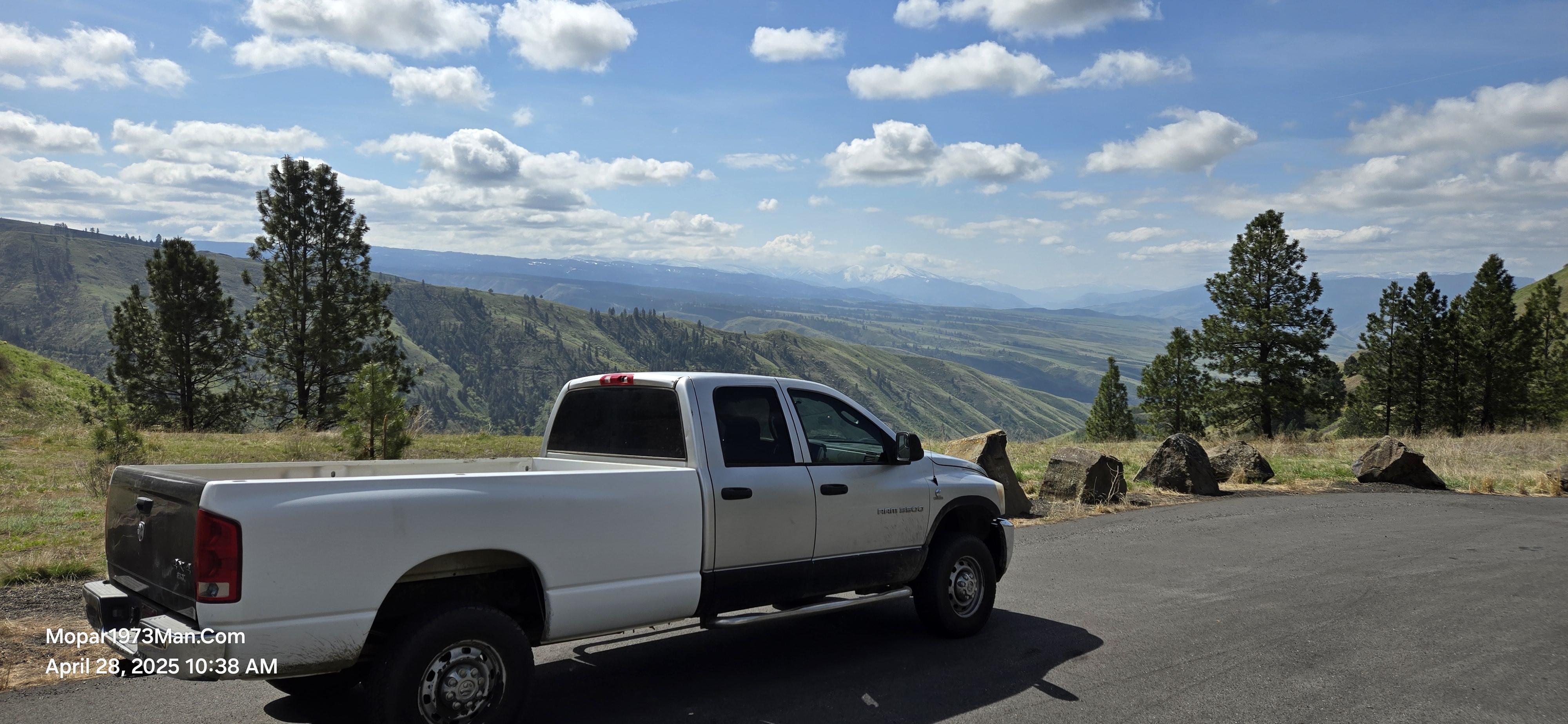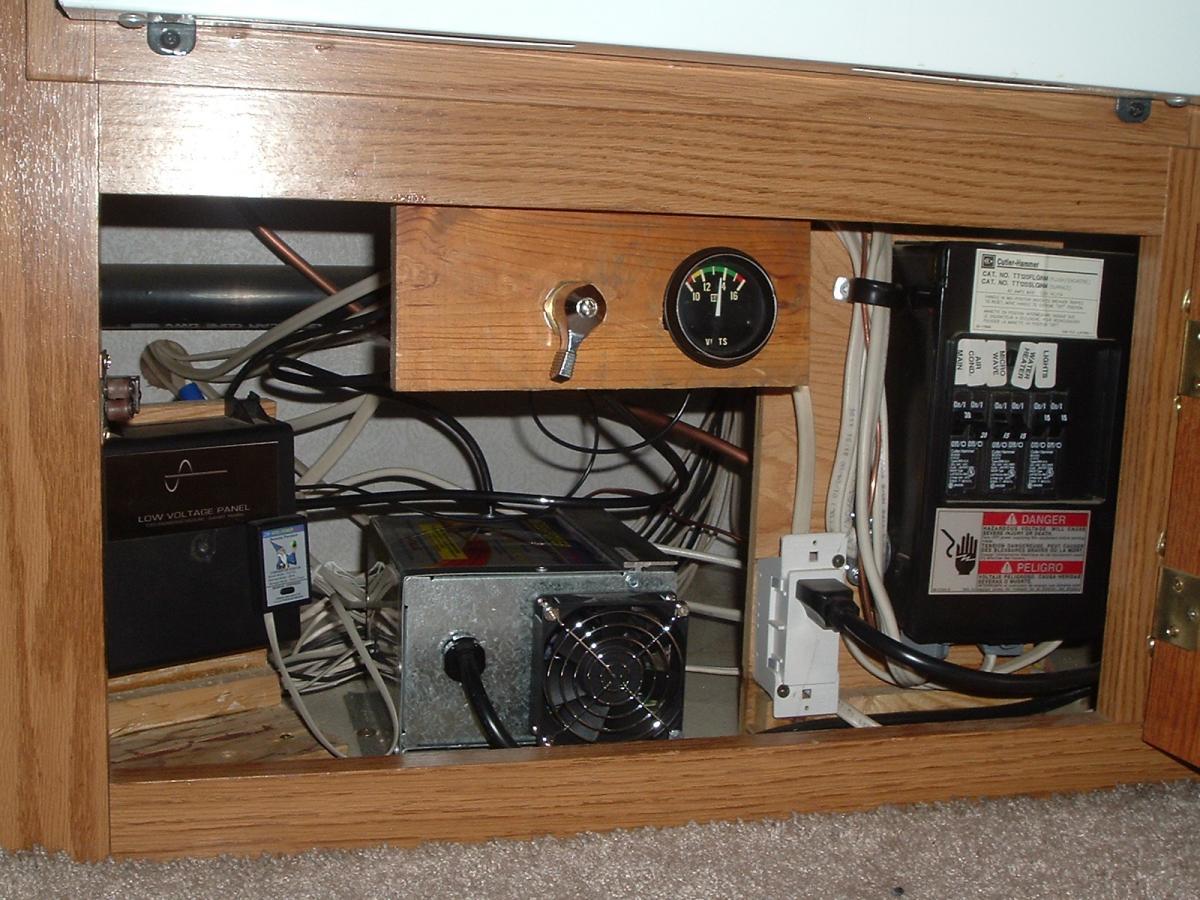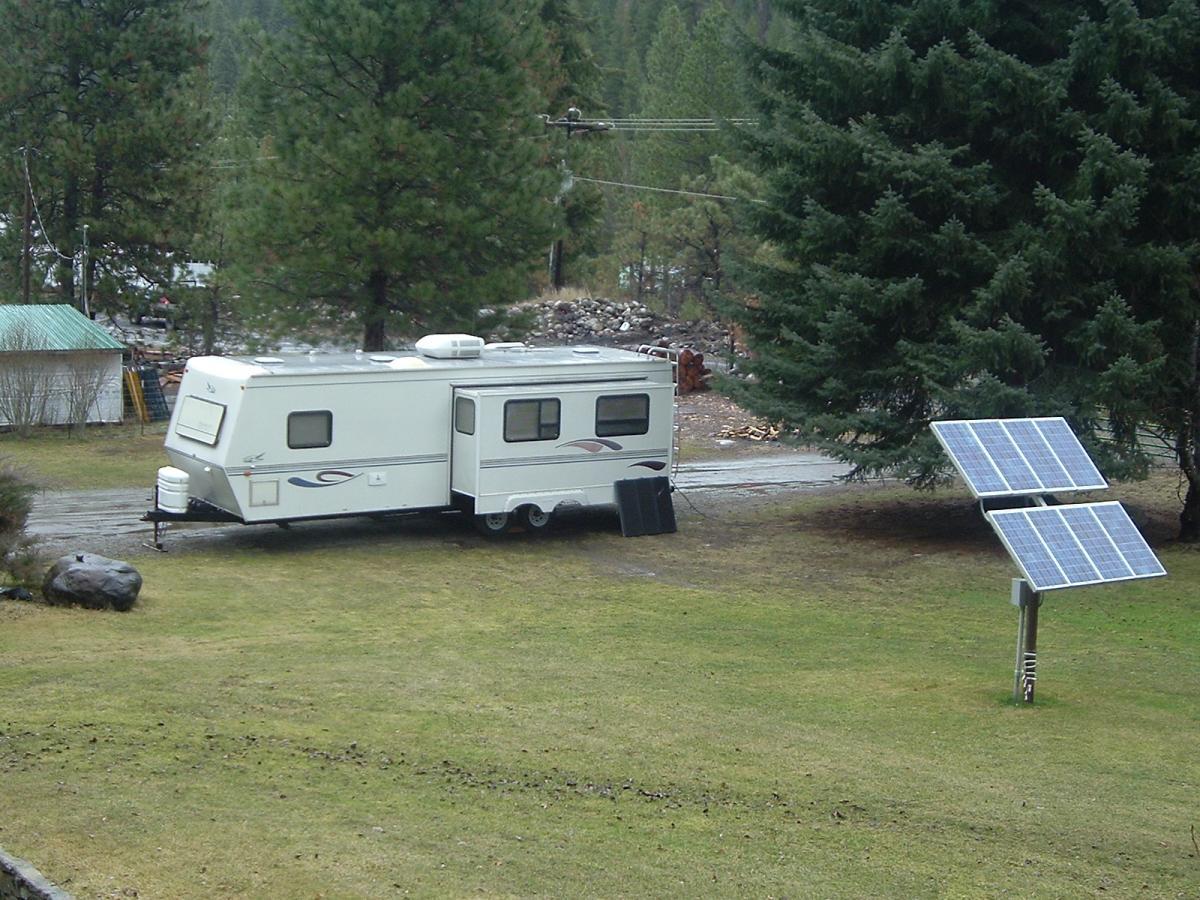
Everything posted by Mopar1973Man
-
Going Solar Powered On The Rv
I went back out later on and turn on the furnace and kicked back in the RV as it ran. Cleaning up some of my debris and trash from the project. I left the cabinet open to watch the voltage and reaction. So I set the heat for 65*F and it was 60*F inside already so it ran for about 10-15 minutes and dropped to about 11.8 volts show both on the gauge and solar controller. It was overcast out and not direct sunlight. Once the furnace completed its cycle it pop back up to 12.2 volts. I continued to fiddle around in the RV cleaning up stuff and within a short while it was up to 12.5 volts. I left and came back up to the house about hour later even being overcast out it finally reached 12.6 volts again. It's not a perfect system that recovers instantly (which would require more panels) but it does charge back up the batteries in a fair amount of time. I'm wanting to redo the master bus lines for the RV original wiring and then add my inverter bus lead in too. So MoparMom is wanting to go to McCall, ID tomorrow so I'll be able to get my EMT tubing and miscellaneous stuff to finish the project. So the stats will be. 3 Solar Panels @ 15 Watts a piece with a total of 45 Watts of power @ 14 volts and 3.2 Amps DC. 1,200 Watt Inverter (100 Amp DC load @ 12 Volts) with a surge rating of 2,400 Watts (200 Amp load @ 12 Volts)
-
Weird Engine Grunt Maybe Timing?
Tanks vents are designed to vent the vacuum off but not pressure. This is a safety issue for emergency responders like fire dept to have a fuel tank gain pressure from heat or fire and have it start venting liquid fuel like at a vehicle accident. All fuel tanks should hold pressure to a point just a safety design.
-
Obd2 Pid`s
Here is what I got on hand... It might help. (attachment) 54262388-Cummins-Isb-Chrysler-FIS3666288.pdf
-
High Load Rating 14" Tires
Ok. This also means that you can't run 65 MPH constantly either. You'll have to back down on speed as well to prevent blowouts. Like running a engine at red line for extended period surely will reduce the longevity of the engine. Just the same with ST tires you cannot run exact 65 MPH and not expect it to blow out either. I've got the same problem with both trailers I've got the Rv and utility trailer I limit my speed to 55-60 MPH and no issues with tires. The RV is going into its 4 year and still looking good. The Utility trailer will be starting its second year by mid to late summer.
-
Going Solar Powered On The Rv
Well I got a break in the rain showers here and got a good start on the solar project. First I had to re-organize the power cabinet to fit everything. Here is before... Then now after moving both DC fuse panel and the AC breaker box and converter box to the back wall. Then I managed to get the solar controller hooked up and the solar lead ran outside. Even getting a good charge when the sun peeked out. I've got my 6 AWG wire ran through the floor but I need to head to town and pick up some EMT tubing and run it down the frame rail so the wire is protected. Also got to pick up the proper sized lugs for the inverter. So this is a small stab at the project and now it back to raining again. As for the solar controller I used the factory wiring for it and routed it through the floor and outside. As for hooking up the solar controller I used some 16 AWG wire and had a unused fuse socket in the RV panel so I used it for hook-up. As for the max current flow from these panels is 3.2 Amps DC @ 14 Volt DC which is 45 Watts.
-
Tapatalk
Small problems with Tapatalk now. * Advertisements I have no control over now. * Tapatalk software adds server load and database load to the site. I will admit Tapatalk is a very popular program but when you got smart phones you like to provide a very light weight data package to your members not bottle up with extra advertisements. This is more so on the site owners that are running the freeware version of Tapatalk so Tapatalk could make some money from us. As for the PUSH notifications I seen that tidbit on the vB4 and when it does is creates another database table so store duplicate notices of like the site does with emails. So if you low active members using smart phone then the database fills up rapidly with both email notices and PUSH notices. Nice feature but Tapatalk didn't provide a way to prune to trim the database after X amount of days. At least IPB is providing the site means to trim the old data back and keep the data cleaned up.
-
High Load Rating 14" Tires
Well first off what is the GVWR rating of the trailer? Then what is the current weight of the trailer? Do the tire meet or exceed the weight of the trailer GVWR? Then look at speed how fast are you planing on traveling with the trailer in tow? What is the speed rating of the tires? All these question will make or break the performance of a ST tire on a trailer.
-
Tapatalk
Few limitation with the site on mobile but you can still operate the majority of the site without Tapatalk. The one limitation I know of is the file uploading is not available on mobile skin so you would have to switch over to full view and then upload your file then flip back to mobile.
-
Tapatalk
Tapatalk no longer required. The site has it own mobile skin and doesn't require a plugin to display mobile styled pages.
-
Air Dog 100?
The lift pump should only run 25 seconds if you bump the starter. Not all ECM will fire the lift pump with the first key turn.
-
New Tires
Interesting on your tire failures. I still wonder about speed rating being a factor in the failures.
-
Edge Jwa
Just drive normally. Accelerate normally. Use your cruise control when you can and keep your speed down. Nothing more.
-
Weird Engine Grunt Maybe Timing?
Here we go again the infamous diaphragm which doesn't exist. I would like a good picture of this "diaphragm" and his test bench.
-
Edge Jwa
For older ones there was this bug of levels crossing. Say you set 4x1 and 5x5 then set for main level 5 and it would be really doggy. But now set 4x5 and 5x5 and go back to a main level of 5 again now you got a animal.
-
This Is Whats Wrong With Our Nation!
What surprises me is I know we have some military folks here I figured they would bounce in and answer this one.
-
Share your RV mods...
AH64ID are you going to place a steel pan under the batteries? Even being a seal battery or AGM I would still place a steel plate or pan under the batteries for floor protection and to possibly capture any leaking electrolyte which is very rare for most sealed batteries but might happen.
-
When All Esle Fails...break Out The Hammer!
Now looking back at this I wondered if a dead blow hammer would of freed it without breaking the cover?
-
2001 24V
Another way to just remove all 6 injectors and have them pop tested. As for Hex0rz oil drop method it does work but if you see it you best change oil too. Also you still don't know which injector(s) is causing this problem which removal and pop testing will do. But as cheap as injectors are it best to replace them all. P0645 http://articles.mopar1973man.com/2nd-generation-24v-dodge-cummins/59-obdii-error-codes/206-p0645-ac-clutch-relay-circuit P0500 http://articles.mopar1973man.com/2nd-generation-24v-dodge-cummins/59-obdii-error-codes/190-p0500-no-vehicle-speed-sensor-signal P1291 http://articles.mopar1973man.com/2nd-generation-24v-dodge-cummins/59-obdii-error-codes/212-p1291-no-temperature-rise-seen-from-intake-heaters
-
Edge Jwa
For the first 3-4 years was 5x5. (Maxed out!) Then after installing +50HP injectors I found 5x3 was optimal and nearly smokeless and that when I beat my previous record 25.3 MPG with 26.12 MPG (ScanGauge record was 27.2 MPG).
-
Share your RV mods...
I look at it this way as long as there is no liquid in any pipes then it will never freeze. Because if air freezes we have new problem. http://en.wikipedia.org/wiki/Liquid_air The boiling point of liquid air is approximately 78 K (-195 °C)(-319 F), and it freezes at approximately 58 K (-215 °C)(-355 F)
-
When All Esle Fails...break Out The Hammer!
Funny how time will literally weld a part on the vehicle for you.
-
Best Type Of Temperature Gauges?
Pressure gauges I say mechanical. Temperature gauges I say electric.
-
2001 24V
I've heard of a lot of people doing this but you could just replace the o-rings too. It's a square cut o-ring from what I've heard and Cummins does stock them.
-
Fuel Boss Or Assassin
Just got another phone call about a dead Assassin pump that didn't work for very long the owner gave up and went to a AirDog 165 and now fighting the pressure up and down swings of a adjustable regulator of the AD 165.
-
Weird Engine Grunt Maybe Timing?
White smoke is a sign of retarded timing. Should be aa P0216 code or maybe a injector issues like a cracked tip?







